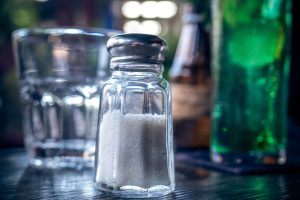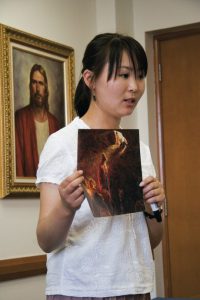Q: What is an object lesson? An object lesson "is a teaching method that consists of using a physical object or visual aid as a discussion piece for a lesson" (Wikipedia, object lesson) In the gospel classroom, an object lesson is a lesson part that uses an object or picture to teach a gospel principle. Object lessons are usually short, and they teach standards and principles, rather than specific doctrines or scriptures.
Sometimes it's difficult to teach the intangible aspects of the gospel. Using objects and pictures can be an effective way for teachers to help students understand spiritual principles. For example, a familiar object like soap could help students understand a more abstract principle like repentance. The Savior often referred to earthly objects (like bread, water, candles, and bushels) to help His listeners understand spiritual principles. When you use objects to teach the gospel, you are practicing one method the Savior also used when he taught.
Objects and pictures can be used to help students visualize what the people, places, events, objects, and symbols in the scriptures looked like. Instead of just talking about yokes (see Matthew 11:28–30), a teacher could bring a yoke to class, show a picture of one, or illustrate it on the chalkboard. Students could smell and touch a flower as they read about the “lilies of the field” (Matthew 6:28–29). They could taste unleavened bread.
Objects and pictures, including maps and charts, can be effective in helping students visualize, analyze, and understand the scriptures, especially when they are used to stimulate a discussion. Having an object or picture on display as students enter the classroom can enhance the learning climate and encourage a spirit of inquiry within the students.
There are two cautions to consider when using objects and pictures: First, they should always reinforce the purpose of the lesson rather than detract from it. Second, the scriptural account should always be the source for the class discussion of the setting and details of an event, rather than an artist’s interpretation of the event or story.
Object lessons are most often used as lesson openers, but they can be very effective when summarizing large amounts of material, presenting information that is new to students, making transitions between various parts of the lesson, or drawing conclusions. (adapted from Gospel Teaching and Learning: A Handbook for Teachers and Leaders - Teaching Methods, Skills, and Approaches)
Q: How often should I use object lessons? Once a teacher has experienced success using an object to teach a gospel principle, he or she may be tempted to use an object in most, or even all, lessons. When you use one teaching method for every lesson, it has become a crutch for you, not an inspired method for teaching students.

Like salt, an object lessons can be used with great effectiveness to flavor a lesson. However, also like salt, object lessons are most effective when used sparingly.
Object lessons are often flawed because they often teach a doctrine or principle with more pizzazz than precision. Using a tangible object to teach an intangible concept will always be imperfect. When you plan a lesson, think about many different ways to teach the concept, and choose the best from among them. My teaching techniques database has hundreds of ideas that can help you keep the attention of your students while teaching gospel principles and doctrines.
Finally, remember this counsel when selecting a teaching method:
While a desire to build good relationships with students is appropriate, the desire to be praised, if unrecognized or unchecked, may cause teachers to care more about what the students think of them than they do about helping the students learn and progress. This often leads teachers to substitute methods that are intended to enhance their image in the eyes of the students for methods designed to invite the Holy Ghost. Teachers who fall into this trap are guilty of priestcraft because they “set themselves up for a light unto the world, that they may get gain and praise of the world” (2 Nephi 26:29). Teachers should be careful that their use of humor, personal stories, or any other teaching methods are not done with the intent of entertaining, impressing, or winning the praise of students. Rather, the focus of all religious educators should be to glorify Heavenly Father and to lead their students to Jesus Christ.
Gospel Teaching and Learning: A Handbook for Teachers and Leaders - Teaching Methods, Skills, and Approaches
Object lessons are very powerful tools that can motivate and inspire your students to live the gospel. I don't use object lessons very often when I teach, but I like them so well I have created a database of hundreds of object lessons indexed by scripture reference and gospel principle that you can use when teaching the gospel. Like the Master Teacher, you, too, can use object lessons to bring people to our Father.



